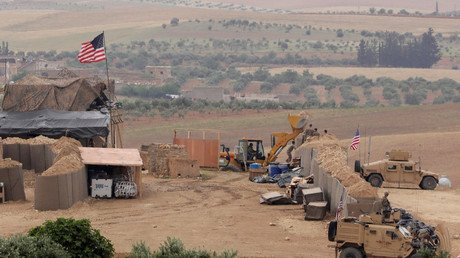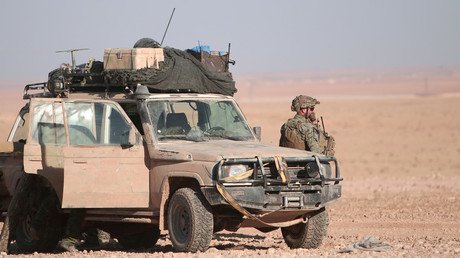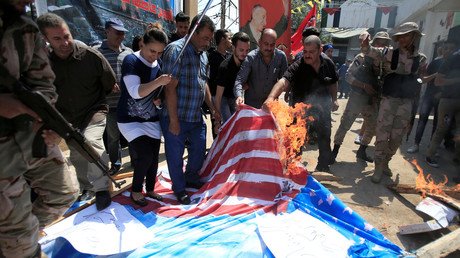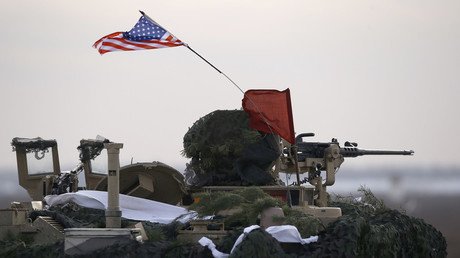No agreement on Southern Syria’s de-escalation zone until US leaves al-Tanf base – Damascus
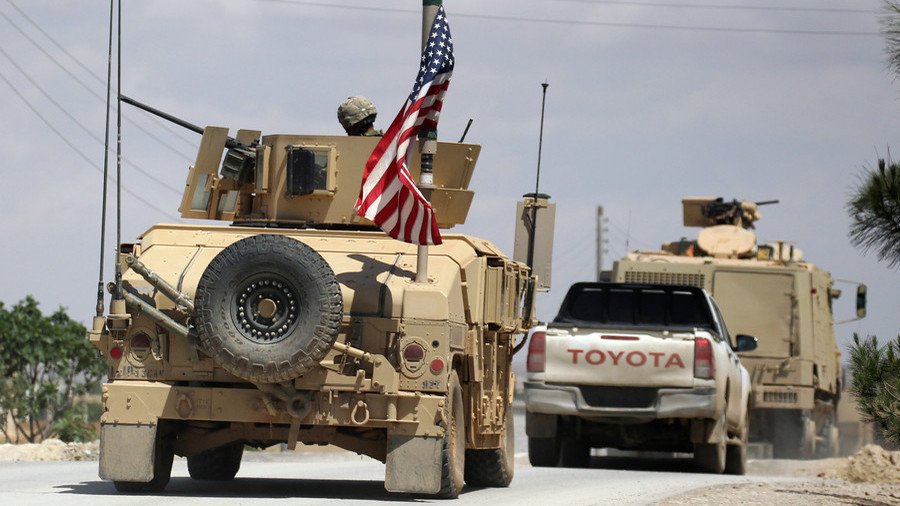
US troops should leave Syria, and particularly the al-Tanf area in the country’s southeast, before any talks about the future of the southern regions held by the militants could take place, the Syrian Foreign Minister has said.
“Do not believe any statements on an agreement about the south of Syria unless the US forces withdraw from al-Tanf area,” Syria’s Foreign Minister Walid al-Moallem said at a press conference, referring to the Southern de-escalation zone covering parts of the Deraa and Quneitra regions.
The areas are currently held by the units of the so-called Free Syrian Army backed by the US. The southern de-escalation zone borders Jordan and is located not far from the Israeli-occupied Golan Heights. According to some reports, the Syrian government is expected to focus on these territories after it fully liberated the Damascus region from terrorists and various militant groups earlier this year.
The Syrian government has not even started any negotiations with the militants in these areas, al-Moallem said, calling the US troop withdrawal a necessary prerequisite for any such talks. He also reiterated that the presence of the US forces on the Syrian territory is illegal.
The Syrian foreign minister also said that the government seeks to resolve all the existing issues, primarily through negotiations and dialog, adding, however, that, should the diplomatic efforts fail, Damascus would likely be forced to use other means. At the same time, he stressed that the Syrian government would conduct any negotiations about the future of the Syrian territories only with other Syrian forces and not with any foreign powers, be it the US or Turkey.
“Neither Turkey, nor US has a right to negotiate [about] the [fate of the] Syrian cities,” he said, as cited by the Syrian SANA state news agency. “We will liberate every inch of our land,” he added. The minister’s statements came after similar ideas were expressed by the Syrian President Bashar Assad in his interview with RT.
“This is our land, it’s our right, it’s our duty to liberate [these areas], and the Americans should leave,” he told RT earlier this week. “Somehow, they’re going to leave,” he said, adding that the Syrian government will focus on dealing with the US-backed forces, including the Syrian Democratic Forces (SDF), “with the Americans, or without the Americans.”
The Syrian leader’s words already provoked an angry reaction from Washington as the US military officials denounced the plans as “bad policy.” The US troops will still stay in the area, Director of Joint Staff Lieutenant General Kenneth McKenzie said on Friday, arguing that the US forces are involved in an important work of “maintaining” the local de-confliction zone.
Over 2,000 US troops in Syria are embedded with the SDF in the northeast as well as in the enclave of At-Tanf in the south, along the Jordanian border. McKenzie said US troops and their local militia allies were staying in Tanf, quashing rumors of their impending withdrawal.
In the meantime, US activities at the At-Tanf base are becoming increasingly questionable. In late May, Russian Foreign Minister Sergey Lavrov said that the area saw “a rise of presence in the region of militant groups, including those we believe to be connected with Islamic State (IS, formerly ISIS).”
Located on Syria’s border with Jordan, Al-Tanf was captured last year by the US, which declared it under its protection and attacked pro-government forces showing up there. Russia has repeatedly expressed concern about the presence of US troops in the area and their refusal to allow access to it, including for humanitarian convoys to the Rukban camp, which has reportedly also hosted some ISIS-linked militants recently.
The situation in southern Syria is increasingly drawing the attention of all parties involved in the Syrian conflict. In late May, Lavrov said that all non-Syrian forces should be gradually withdrawn from the southern de-escalation zone. “As a result, … only the Syrian Army troops should be stationed at the Syrian border with Israel,” the Russian minister said at a joint press-conference with his counterpart from Mozambique.
On Saturday, Iran said it supports the Russian initiative aimed at imposing Syrian government control over the southern part of the country. “We strongly support Russian efforts to drive terrorists out of the Syria-Jordan border and to bring the area under Syrian army control,” the secretary of Iran’s Supreme National Security Council Ali Shamkhani said, as cited by Reuters.
The official also denied that any Iranian forces were present in the area. “We have said before that Iranian military advisers are not present in southern Syria and have not participated in recent operations,” Shamkhani said.
Earlier, Russian Defense Minister Sergey Shoigu discussed a de-escalation zone in southern Syria with Israeli Defense Minister Avigdor Lieberman. Tel Aviv is concerned by what it calls Iran’s alleged increasing military presence in Syria. The meeting came just days after the Israeli Prime Minister Benjamin Netanyahu vowed to fight Iran “anywhere in Syria.”
